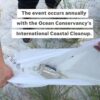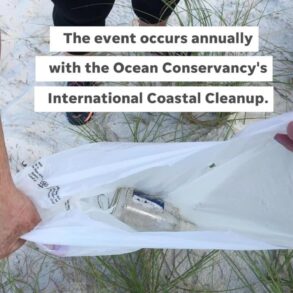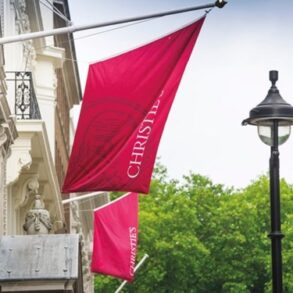Meet an artist who’s on the forefront of both technology and environmentalism — at least when it comes to a tiny, rare salamander that lives in the one lake in Mexico City.
You’ve probably heard of the axolotl or seen varying representations of it everywhere from Mexican folk art to Japanese anime to the video game Minecraft. But, while these adorable creatures are iconic in art and culture, they’re endangered. The lake that axolotls call home is being polluted and their numbers are dwindling.
That’s where Matt Martinez comes in. Martinez goes by the name “Scum” and is using his artwork to raise money and awareness about the plight of the axolotls.
His art isn’t found on the walls of galleries or homes. It’s bought and sold solely online as what’s called NFT’s, or non-fungible tokens. It’s a new world of virtual art dealing that he sees is the wave of the future. The Show sat down with him recently to talk more about it all.
Full conversation
MATT MARTINEZ: An NFT is an inscription on a blockchain. I sell NFTs specifically on the Solana blockchain, but there’s many out there. You have Ethereum, AVAX, Bitcoin, Tezos. They all have kind of thriving art markets. But essentially before NFTs, it was impossible to sell a piece of digital art and prove ownership. Now art has, the kind of buzzword is “digital provenance.”
So if I create a piece of digital art and I have a following and I have collectors and they want to be able to purchase, own and eventually sell a piece of digital art, they can because of NFTs. That’s kind of the 10,000-foot view.
But the real, exciting part of NFTs in the beginning was that royalties can be written into the smart contract. So if my collector buys a piece of art and sells it for more or less later — doesn’t matter — a percentage of that sale will automatically go to my wallet, the wallet that created the NFT in the first place.
So a lot of people made the joke that they could just right-click save a piece of art because it’s digital. And of course you can, but you can’t actually own it and you can’t actually sell it. And there is a market for both those things in the NFT space.
LAUREN GILGER: So interesting. So it’s like a digital kind of version of Christie’s or something like that, like an auction house.
MARTINEZ: Well, Christie’s is auctioning NFTs.
GILGER: And for crazy amounts of money, right?
MARTINEZ: Mmm hmm.
GILGER: Wild. OK, so there’s this interesting idea in there of sort of connecting digital and physical art. Are there physical versions of a lot of your digital art or none?
MARTINEZ: So in my case, no. In the future maybe. But in my case, no. Everything is created digitally, either with Photoshop or Procreate, either on the iPad or the computer. But there are a lot of artists who do create physical work, take high-res photos of it, sell the NFT as sort of like a proof of authenticity, and then they can ship the physical piece of art to whoever the owner is.
But the thing that’s being worked on now, that no one has quite cracked this egg on, is embedding either NFC chips or chips that tie to the NFT specifically, and then an escrow service. So if somebody is selling the physical piece of art, then the NFT is transferred along with it, and then royalties are also applied.
GILGER: It’s fascinating because it raises a whole different layer of questions about ownership and what that means, sort of in a digital landscape. How did you get into this?
MARTINEZ: So I was kind of a closeted artist for a very, very long time. I did branding, graphic design, web design and photography for a very long time. In a previous life, I was in the restaurant industry here in Arizona as well.
But a mentor of mine said, “you should look into NFTs.” I think this was late 2021. And he was like, “I think we might actually be early to something for once.” I was like, “OK.” And he was one of my biggest clients as well. I was a freelance graphic designer. I managed some of his brands, photography, etc.
And about two months after he told me to look into NFTs, I quit. Everything. I quit all my clients, and I’ve been full-time in Web3, I guess is the sort of placeholder name for this space.
GILGER: I saw that. I didn’t know what it meant.
MARTINEZ: I’ve been full time as an artist now for just over two years.
GILGER: Wow. So this is a whole different realm for you. That’s really cool.
MARTINEZ: It’s brand new.
GILGER: How do you make NFT art? What’s your process?
MARTINEZ: So, like I said, I’m a digital artist. Some things may start as a sketch. Some things may start as a small painting, a napkin sketch, whatever it is. Conceptually, everything sort of starts in my head. And then I use a program called Procreate most often. And then you export your digital art, you make it at a large enough resolution that the quality is good, so it can be displayed. Ideally in the future, people are actually displaying digital art in their homes.
And then you inscribe it on chain. I use, specifically on Solana, there’s a platform called Exchange.Art. They upload your art, and then they write a smart contract that represents your piece of art. And then on their platform, you can buy, sell and exchange art. You can also do things privately — OTC they call it, or over-the-counter, off the chain. And as a NFT artist, you’re doing the marketing. So then you take to Twitter or to Instagram or to Discord and you share your art with collectors.
GILGER: It’s like putting it on a gallery wall essentially, but it’s your own personal gallery that is everywhere.
MARTINEZ: Yeah, 100%.
GILGER: That’s fascinating. OK, so let’s talk about some of the projects that you’ve been involved in. You’re involved in a really interesting one right now outside of Mexico City that involves sort of trying to save these adorable and sort of folkloric creatures called axolotls, which are salamanders. But you’ve seen the imagery of these. It’s been sort of mythologized at this point.
And the idea here is to create sculptures that will then help raise money to save their environment, essentially. Tell us about this.
MARTINEZ: Man, you can get me going now. so in the beginning, when I started my most recent collection — it’s called Slimes — I promised to donate 10% of every single sale through the entirety of the series. There’s going to be 50, so it’s not complete yet. But to date we raised around $40,000. The original goal was to just try to donate some money.
And then I took a trip down to Mexico City, last year to meet with a couple of the partners who had been working on this project with. When we went down there, we found that it’s a really, really delicate ecosystem.
So they’re iconic, right? Axolotls. They’re in Japan. They’re in the United States. They’re kept as pets, but most people don’t know they’re actually endemic to this one lake in Mexico City, which is the remnants of the ancient city of Tenochtitlan.
They still use the ancient agricultural techniques, called chinampas. Chinampas are essentially floating gardens. It’s really, really cool.
Right now the lake is so polluted because of runoff from the city. So the lake gets polluted once a year whenever it rains, unfortunately. Also, at some point during the ’60s, they introduced tilapia and carp to the lake. They’re predatory fish. They’ve been eating the axolotl population.
So you take all these factors into consideration, and I think within the last five months, basically everyone working on the lake, trying to preserve it the axolotl population has come to terms with the fact that they don’t exist in the wild anymore. So we’re now working with a lot of people who are trying to create an environment within the lake that they can survive in.
GILGER: So tell me a little bit about why this project. There’s a history of artists sort of using their art for the common good or for certain causes and such. But why this one for you and why this way?
MARTINEZ: So I grew up in the United States. Dad’s Mexican, Mom’s from Canada. And this is just a big part of my personal lore. But I felt like I was always a little bit too Mexican for my white friends, too white for my Mexican friends. And I never really had a good outlet to explore these topics.
So through art, I decided to sort of sink into what it meant to be Mexican for me. So my art, a lot of it is, it’s the characters themselves are luchadores, exploring both Chicano and ancient Mexican aesthetics and mythology and trying to combine this thing that makes me feel like I’m learning, like I’m growing a little bit.
So also, I use a lot of axolotl imagery after I found out that they were endemic to this small place in Mexico City. So I wanted to do something to try to help the axolotls. And through the process, I’ve just gotten more and more in love with both the animal and the place itself. And now it just feels like I don’t know what else I would be doing with my time other than this. This is pretty cool.
GILGER: What’s next for this? This is just the beginning, it sounds like.
MARTINEZ: It’s just the beginning. So we recently did our first expo: 11 sculptures, 11 artists spanning Mexico City, Uruguay, Colombia and the United States and Canada. We are working on getting a set of sculptures to COP16 (the United Nations Biodiversity Conference) in Colombia. We’re working on getting hopefully a large piece to the U.N. General Assembly. We have contacts. We’re hoping that these things all pan out.
Things have worked really well so far, so no reason to believe they won’t. The sculptures are being put specifically in areas or chinampas where people are working on the lake, whether to reintroduce native plants, remove invasive species or try to help the axolotl specifically. So we’re working with Embarcadero Cuemanco to ideally give tours specific to the location of the sculptures themselves, so people can learn about what’s going on in the lake and also support the people who are actively working on the lake.
KJZZ’s The Show transcripts are created on deadline. This text may not be in its final form. The authoritative record of KJZZ’s programming is the audio record.
This post was originally published on this site be sure to check out more of their content





